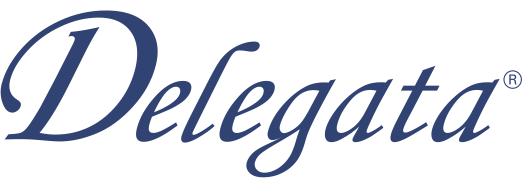
Pacific Gas and Electric (PG&E) Case Studies
The Pacific Gas and Electric (PG&E) company is one of the largest combined natural gas and electric energy companies in the United States. There are approximately 24,000 employees who carry out the primary business of transmission and delivery of energy, providing natural gas and electric service to approximately 16 million people throughout a 70,000-square-mile service area within California. This includes over 106,000 circuit miles of electric distribution lines and over 18,400 circuit miles of interconnected transmission lines, and over 42,000 miles of natural gas distribution pipelines and 6,000 miles of transmission pipelines, covering millions of customer accounts.
ES IT Portfolio Operations
Energy Supply IT organization serves as the primary interface between IT and five PG&E business groups, providing provides safe, reliable, cost effective sound energy to PG&E’s customers. In addition, it performs electricity and gas trades to provide power to PG&E customers. All this is managed to ensure credit and market worthiness of PG&E.
In this project, PG&E sought out to manage strategy, planning, development, and operational support for the implementation and operation of PG&E enterprise wide portfolio and project management, records management, and corrective action plan management in order to:
- Increase client satisfaction,
- Increase employee engagement, and
- Support strategic initiatives introduced by PG&E’s CEO, LOB Executives, CIO and CTO.
With the recent successes of the Continuous Improvement (CI) Program, there have been many improvements in processes, tools, and information that need to be brought together to show the value of changes implemented.
Delegata partnered with PG&E’s IT BT ES leadership to investigate and research process inconsistencies and develop a communication program that tells the stories of success. Additionally, the team aligned the Cl Program with the SuperFit IT program being sponsored at the CIO’s level. This required organizational alignment with the set of KPls, also demonstrating business value. Finally, concerns and ideas from the Director and Executive leadership were captured and prioritized for implementation.
Services that were provided, included:
- Investigate and research process inconsistencies
- Assist with the implementation of the KPI model and gather all available history to show trends.
- Align the Cl Program to SuperFit IT and the KPI model.
- Implement a communication program for IT BT ES.
- Manage IT BT ES leadership focus log that is integrated with the Cl Program.
- Transfer Knowledge to appropriate team members to ensure the continued operation of the KPI reporting, communication program, and continued alignment with the SuperFit program.
- Assessed current Portfolio Management capability to deliver services
- Gap analysis with priorities and required capabilities in desired future state
- Decision analysis with management for recommended targets of improvement
- Established a Roadmap that included:
- Immediate actions for most rapid achievement of targeted improvement (first 30-90 days)
- Tactical and strategic activities to continue improvement to the desired state (90-270-day actions) and beyond
- Provided improved toolsets and recommendations for solutions enhancements detailed to specifications specific to:
- Standardization of reporting
- Standardization of communication across forums, clients, and projects including the cadence on each project
- Resource management improvement opportunities
- IV&V best practices
- Earned Value Techniques
Transformation Management | Continuous Improvement Program
As PG&E committed itself to continuous improvement (CI), the organization needed to develop its capabilities based on strategic objectives, CI initiatives, and project priorities while institutionalizing transformation management in their IT organization. Also, key team members needed to gain a comfort level and confidence in facilitating the sessions and modules of the Continuous Improvement Series. Finally, it was critical that the CI Roadmap was finalized in order to establish structure and processes to drive it to completion.
In 2013 BT ES, Delegata created with direction from the leadership team, a Continuous Improvement Program (Cl Program). This program included the creation of a Cl Strategic Plan for 2013 -2105 that contains three Strategies, seven Strategic Objectives, fourteen Strategic Initiatives, and 146 Cl Requirements. The program facilitated the extended leadership team’s taking of responsibility to implement 42 of the Cl requirements in 2013. Also created by and for the program is the Culture of Continuous Improvement Series that consists of four 4-hour training modules – 1) Inspiring Trust, 2) KPI Model, 3) Cl Program, and 4) Cl Communications.
These modules were taught to about 34 members of the employee community of BT ES. During 2013 three key members of BT ES turned their attention to the program and have accepted responsibilities to carry the program into 2014. The roles accepted included: Cl Program Manager and Facilitator for the KPI Model Module; Cl Program Architect, which includes the Cl Program SharePoint structure and the SharePoint Structure of BT ES, and Facilitator for Cl Program Module; and Facilitator for the Inspiring Trust and Cl Communications Modules.
- This engagement helped ensure that the three key players in the Continuous Improvement (Cl) Program were prepared to fulfill their roles, in conjunction with the BT ES Leadership team, and to be fully engaged to sponsor the 2014 Cl Roadmap. In addition, these players would be empowered to collaborate with the Extended Leadership Team as individual contributors taking responsibility to implement the Cl Requirements identified in the 2014 Cl Roadmap. Other benefits included:
- Transformation Strategy Consulting to unite organization functions into a team focused on strategic objectives
- Facilitate prioritization of projects
- Issue resolution and risk mitigation associated with the work of the changes that competes with the work of supporting the projects and operations of the Energy Supply line of business
- Institutionalize the transformation management capabilities within the Energy Supply IT organization

